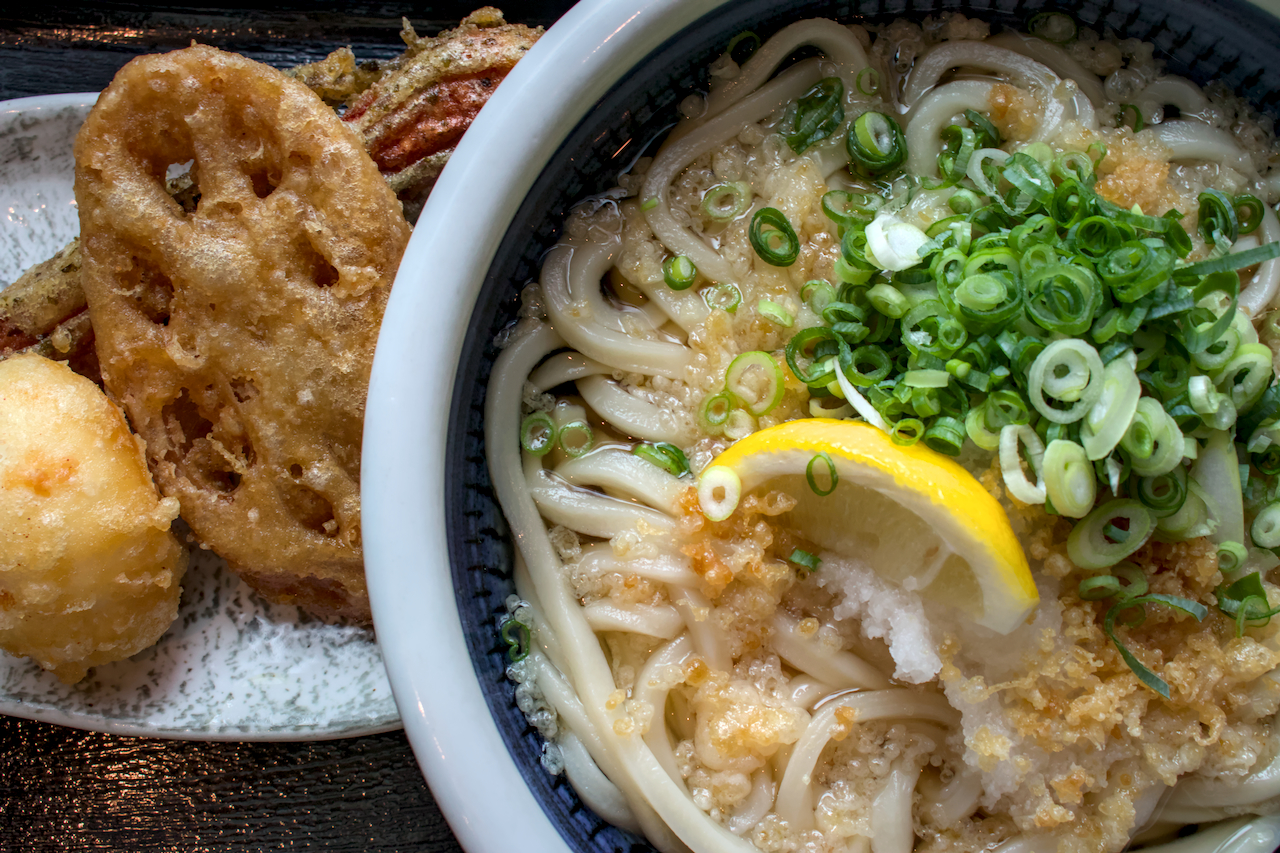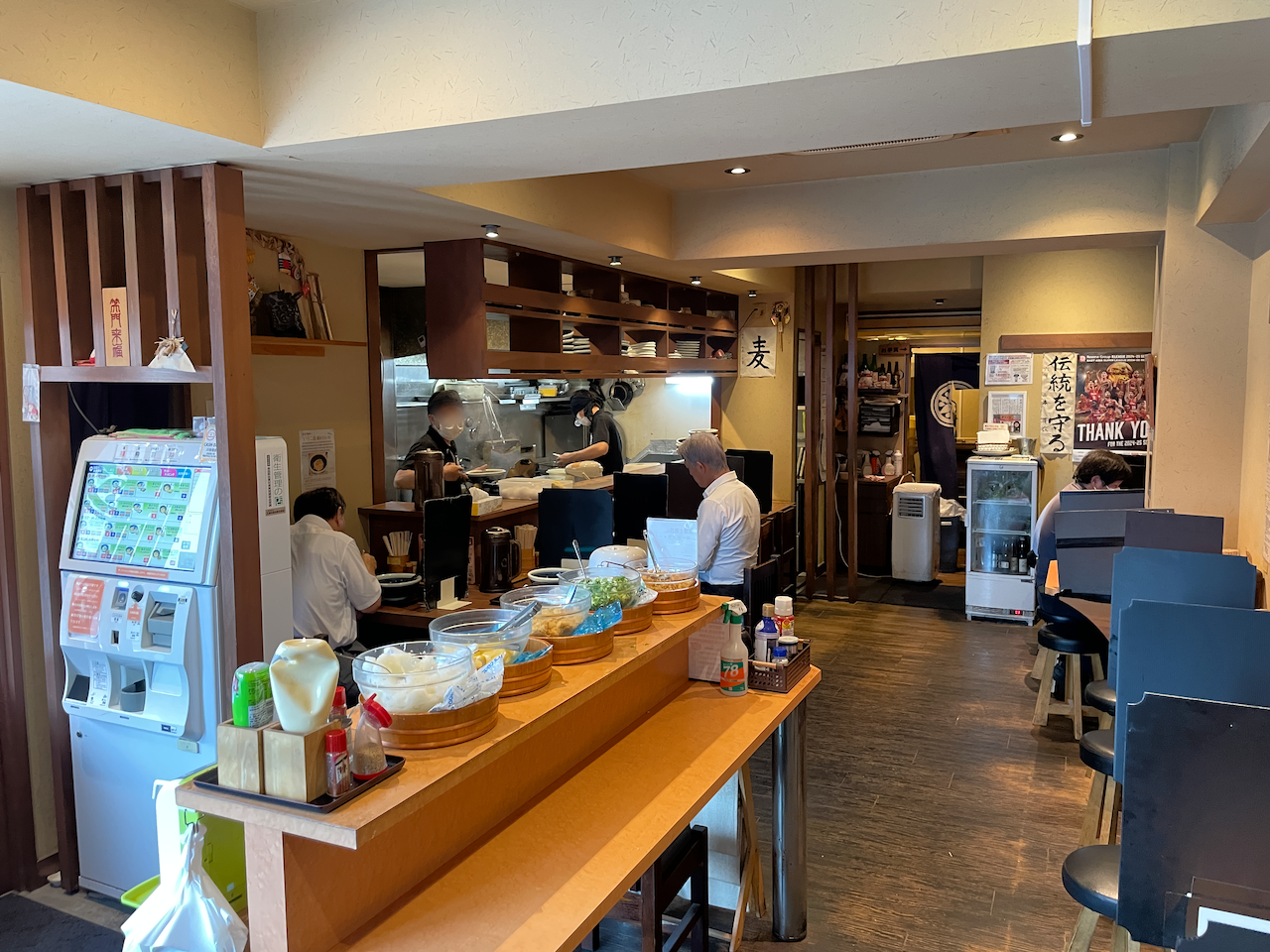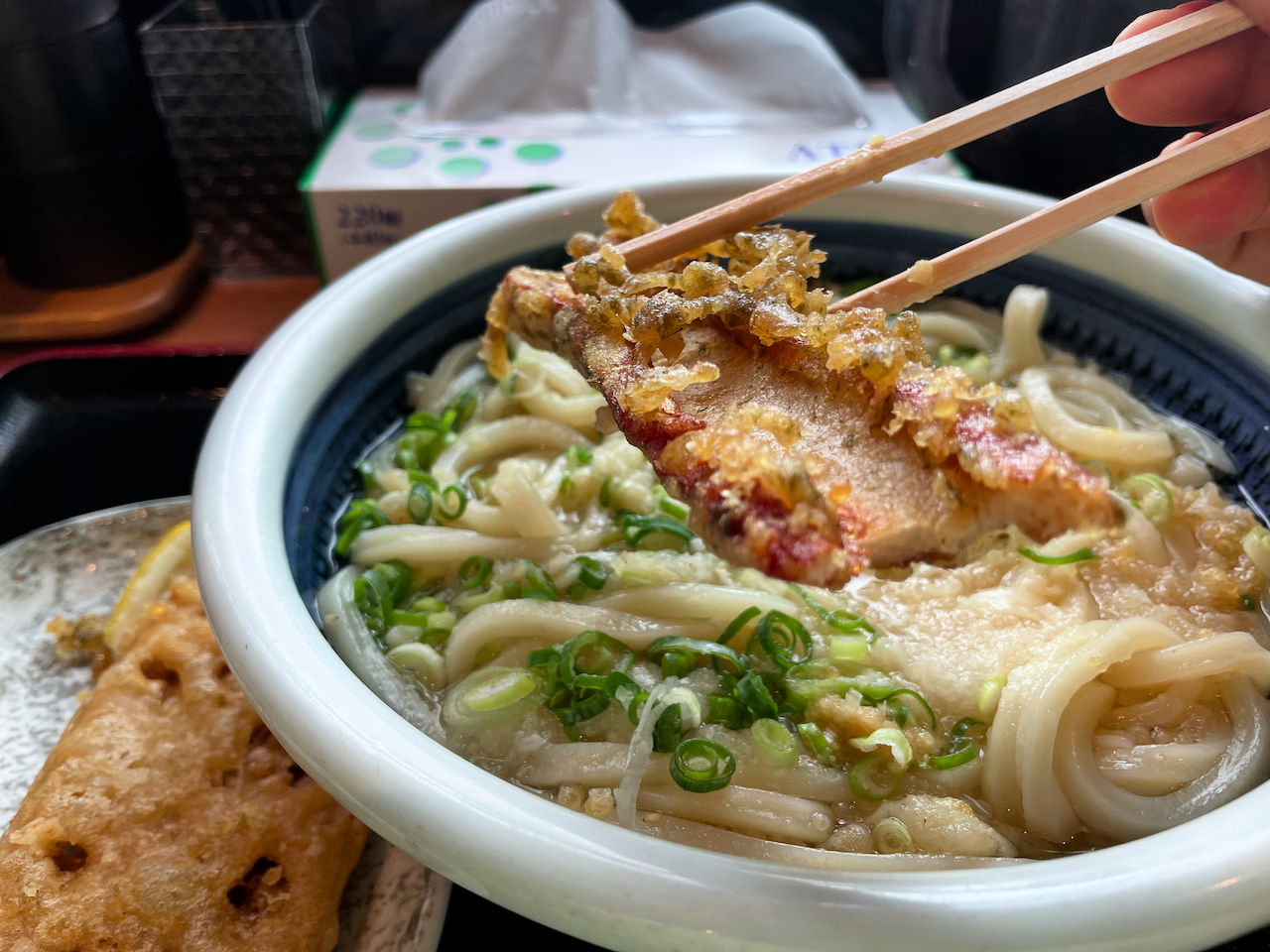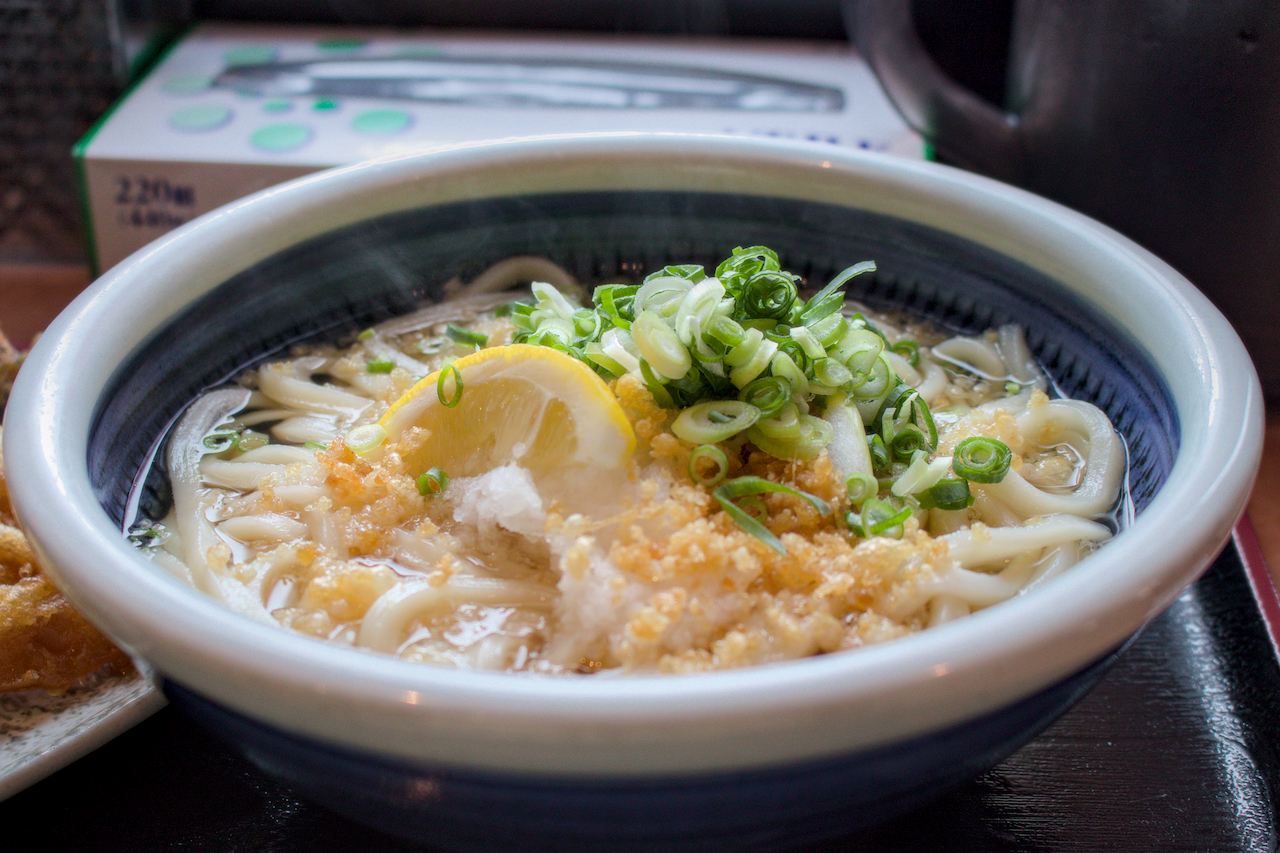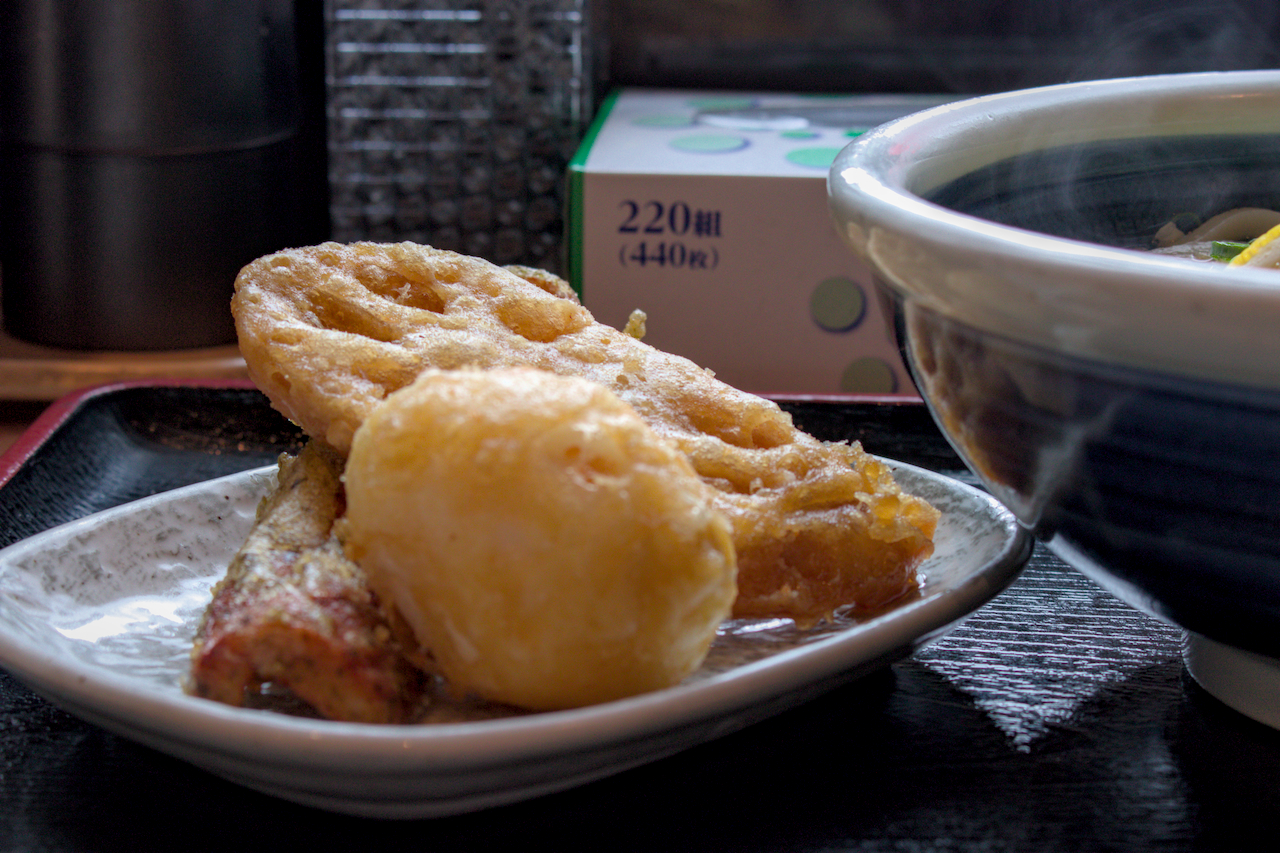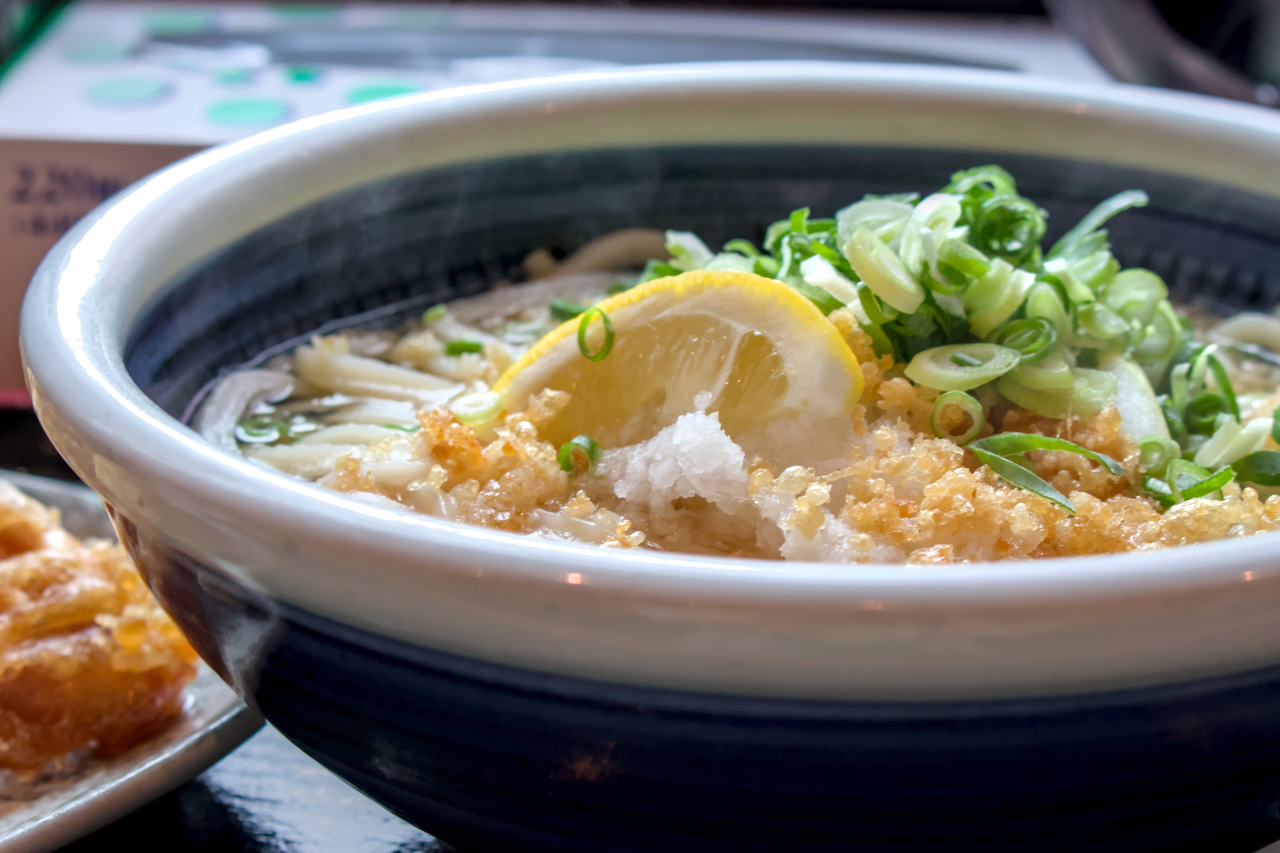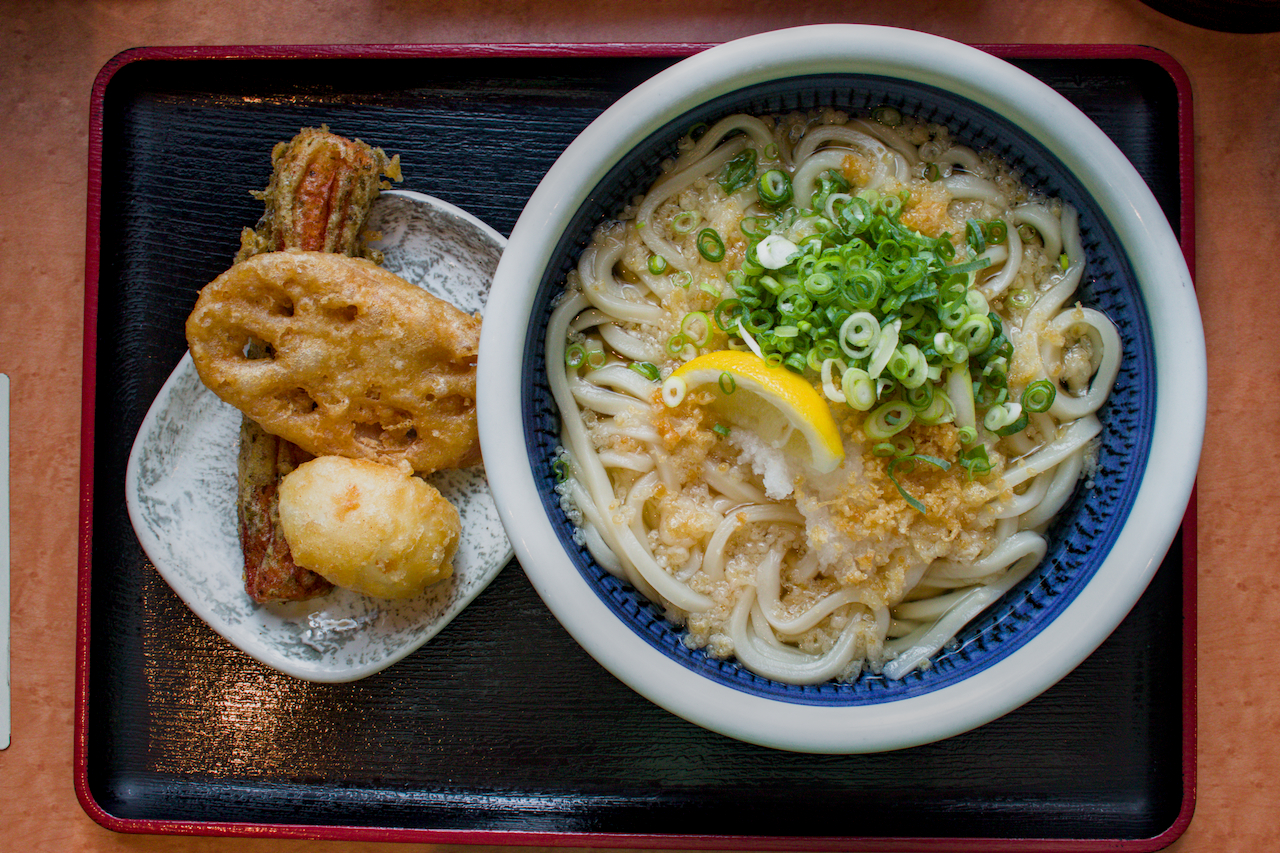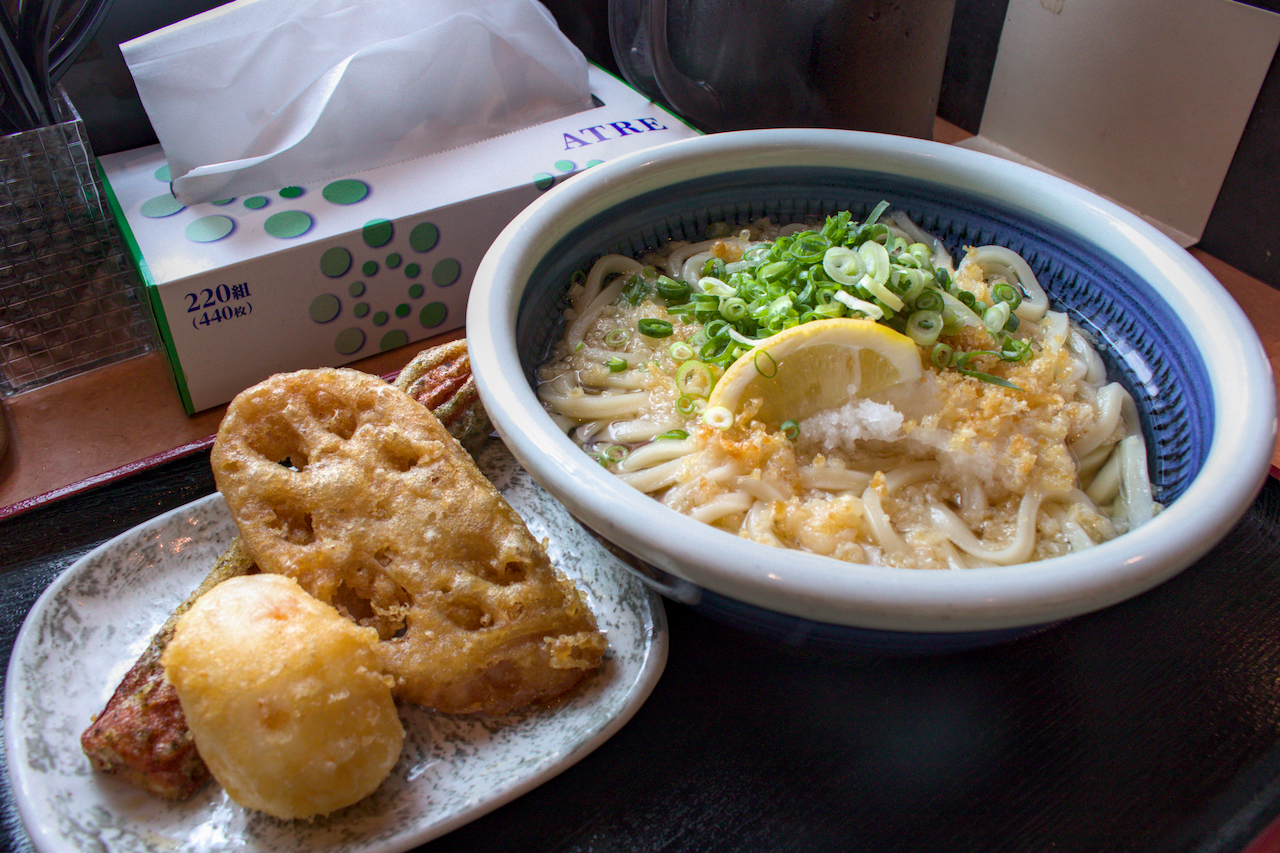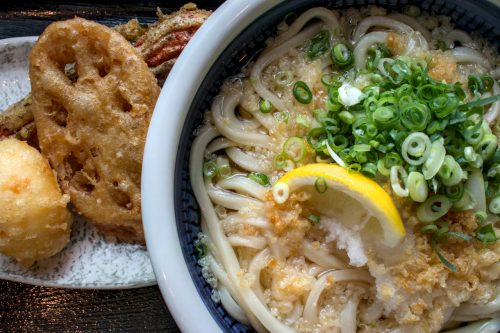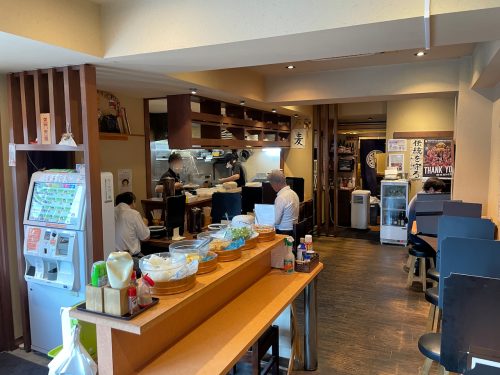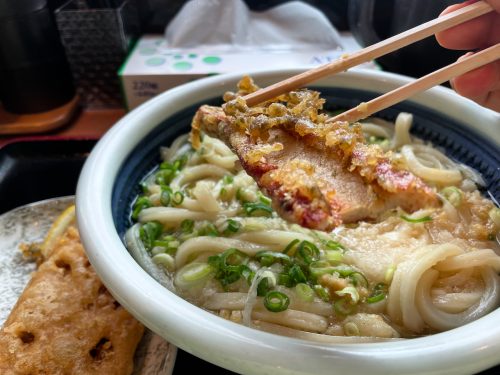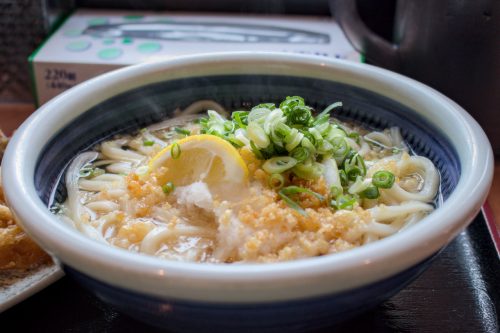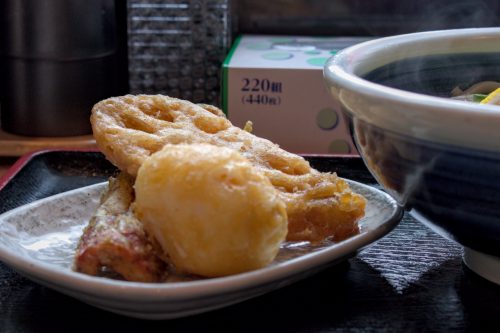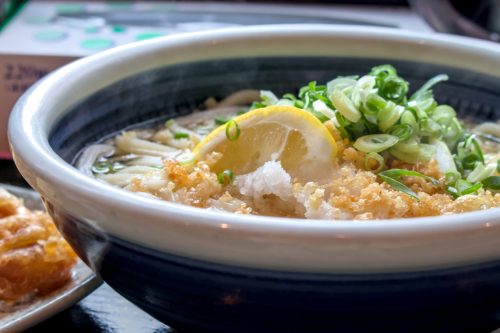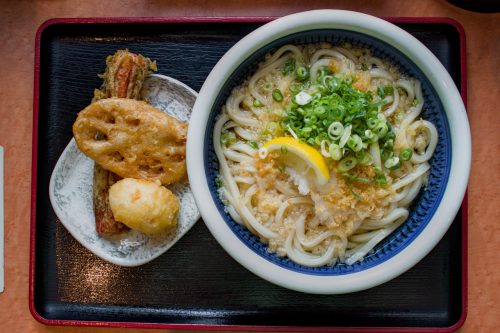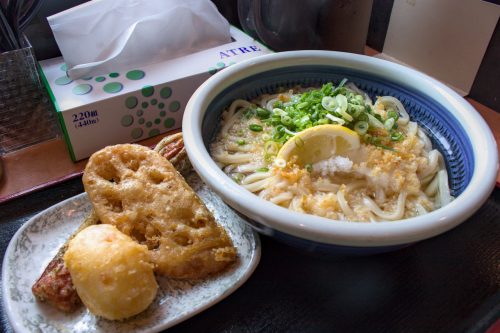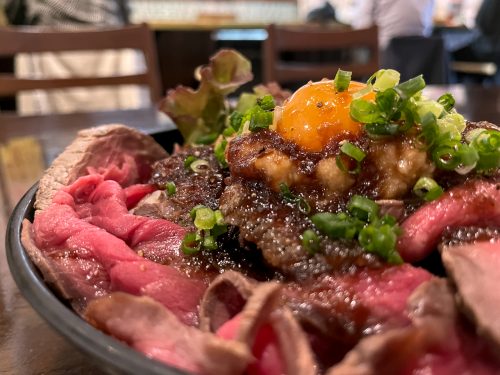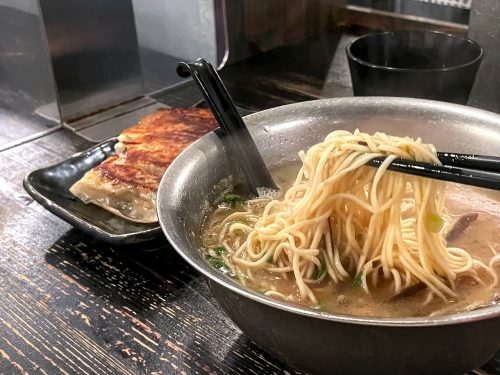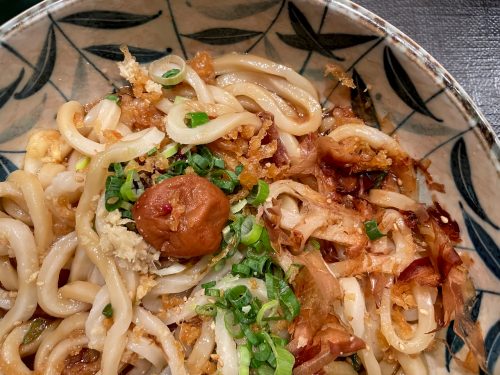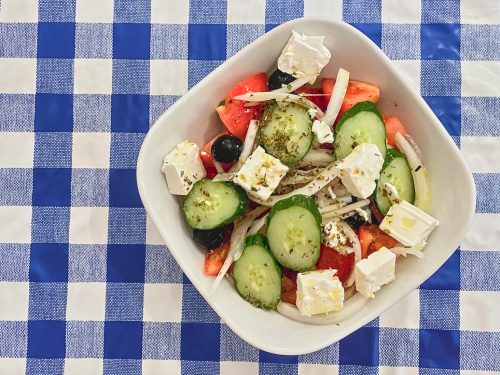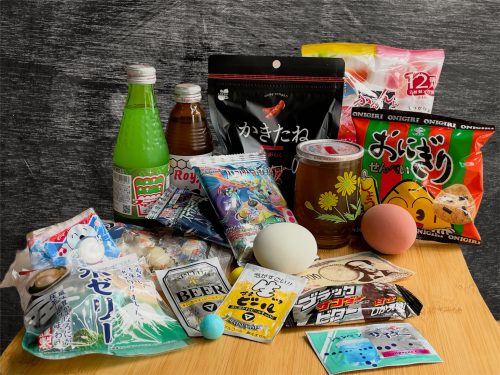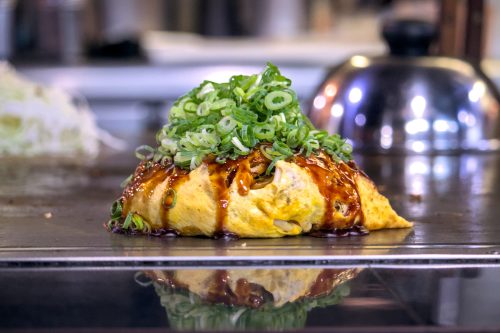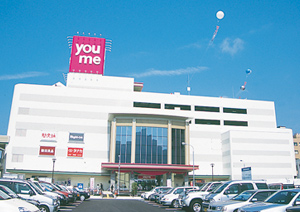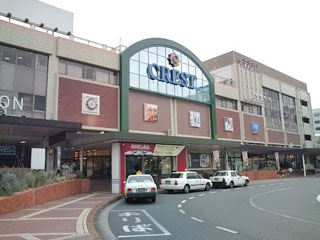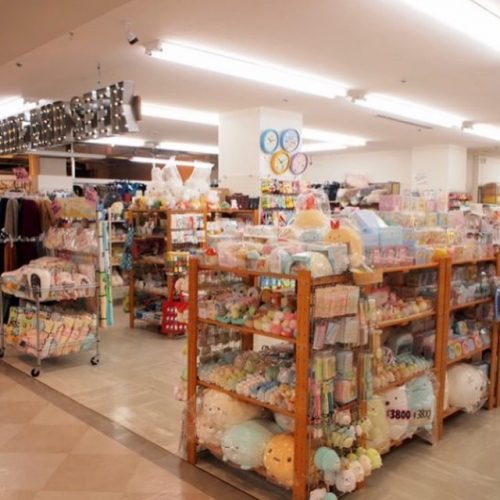Eat
Yamafuji — Authentic, Handmade Sanuki Udon in Hiroshima
While Eastern Japan is known for soba, Western Japan is udon country. Especially popular is the udon from Sanuki City in Kagawa Prefecture. But if you’re in Hiroshima, you don’t have to travel all the way to the island of Shikoku to try authentic Sanuki Udon. Hiroshima’s Sanuki Udon Senmon Ten Yamafuji, a six minute walk from both Hiroshima Castle and Shukkeien Garden, serves up authentic, handmade bowls of the distinctively tender yet chewy udon style.
In contrast to Kansai-style udon, where the broth is in focus, Sanuki udon’s focus is the noodle. The owner, Keisuke Yamamoto, makes the noodles entirely from scratch using a blend of wheat from Kagawa Prefecture and Australia. The dough is kneaded by foot in the traditional “kiku” style. The extra weight of kneading by foot helps develop the wheat gluten better than kneading by hand. Stronger gluten bonds make more elastic dough, so foot kneading is essential for creating Sanuki udon’s characteristic chewiness.
After the dough is made, it is aged and hand-cut into thick noodles. Kansai style udon noodles are soft, pillowy and rounded. Sanuki udon noodles, though, are hearty, thick and geometric. Yamafuji’s noodles are on the thinner side of Sanuki style, and because they are hand cut, a few in the bowl can be irregularly sized.
Affordable and satisfying, udon, whatever the style, is a popular choice in Japan for lunch. At many udon shops, including Yamafuji, customers typically have the following options when it is time to order. First, you need to consider whether you want kake udon, udon with broth, or bukkake udon, udon in a more flavorful sauce. Many places offer zaru udon, chilled udon on a bamboo tray, but that is not currently an option at Yamafuji.
Yamafuji’s broth, like the noodles, is also homemade. The main ingredients in the broth, high-quality dried sardines from Ibuki Island and soy sauce, both come from Sanuki udon’s home prefecture of Kakawa. The resulting broth is clean and sharp tasting without any fishy smells. Eating it, one would never suspect it was made out of sardines and soy sauce.
After choosing a primary udon style, the next option at Yamafuji is whether you want the broth cold or hot. Typically, cold is eaten during the summer and hot is eaten during cooler days like the rainy day on which Joy in Hiroshima visited.
After this, customers have the option of adding a variety of basic toppings like kitsune (fried tofu), yama-imo (Japanese mountain yam), raw egg, wakame seaweed, sautéed beef, and others.
After you get your bowl of udon, Yamafuji further offers a free toppings bar in the center of the shop where you can further customize your bowl with tenkasu (fried batter bits), grated ginger, chopped green onions, fresh lemon slices and more.
If all these options seem overwhelming, YamaFuji has a variety of ¥800 set meals and ¥700 recommended bowls on their menu for customers to choose from. For example, the recommendations include Naruto-wakame Udon, with the iconic naruto fish cake, and the unique Mentai Kintama Butter Udon, with mentaiko (pollack roe) and a pat of melting butter.
The Sanuki Tenmori Set is especially good. For ¥800 you get kake udon with Yamafuji’s popular tempura. Incredibly crispy and rich without being oily, their tempura is larger than average and surprisingly complex in flavor. The deep fried egg is rich and lava inside. The renkon, lotus root, is extra crispy, and the chikuwa, a kind of tubular fishcake, is quite long and not fishy at all.
When asked why his tempura was so uniquely delicious, Yamamoto laughed and said he made it fresh daily.
The dining area is quiet except for the background sounds of customers slurping noodles, the sizzle of food dropping into a frier in the adjacent open kitchen, the windy hum of the air conditioner and kitchen ventilation fan.
Ordering at Yamafuji is both convenient and confusing. It is done through a vending machine just to the left of the
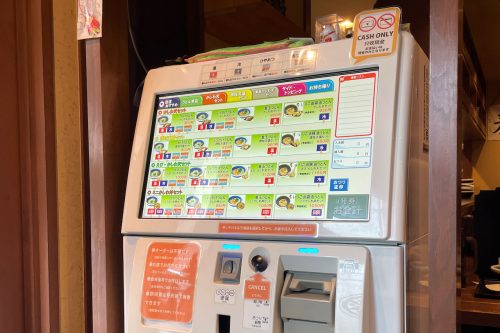
Yamafuji’s Ordering Machine to the left of the entrance (Joy Photo / Michael Farrell)
door. It sends your order directly to the kitchen, so there is no need to bring a ticket to the counter. There is also no need to wait to be seated. After you finish paying at the machine, you can find an open seat yourself. And when your food is done, the staff will bring it to you. There is an English ordering guide hanging to the right of the door opposite the machine. However, the interface of the machine is not very intuitive. Whether your home language is English or Japanese, the ordering machine is confusing because it lacks the typical feedback cues that signal users that a selection was made. As a result, even if you press buttons, it’s not clear that you accomplished anything. But if you follow the English guide exactly, it should not be too difficult.
The interior is small and cozy with only bar-style seating and fills up quickly. It is not uncommon to see queues of local office workers outside the door along the nondescript street.
Japanese restaurants are often slower an hour before closing time, potentially a good time to visit. But at Yamafuji, if you do that, you’ll run the risk of not being able to eat there. The store is so popular that sometimes they run out of noodles, forcing them to close early. This was actually what happened on the rainy day that Joy In Hiroshima visited and a tourist couple was apologetically turned away at 2 p.m., one hour before their formal closing time.
If you’re out of luck and Yamafuji is closed, you can take the Hiroden two stops south to Hatchobori Station and walk three minutes to Kamahachi, another great sanuki udon shop.
If you want to stay in the area and are open to something a little different, try the “death” level spicy tantan noodles at Musashibo, up the block and around the corner.
Moment of Joy
The value for your money is really high. Whether you eat at a chain restaurant or a small shop, udon is an affordable lunch across Japan. But the quality of the food at Yamafuji outstrips any chain store and many of its smaller competitors. Plus, the set meals at Yamafuji are genuine deals. Many udon restaurants are able to push the price of a meal over ¥1,000 with à la carte side dishes, typically tempura and onigiri, but Yamafuji’s ¥800 set deals keep the final tally well under ¥1,000.

- Open
- 10:00 to 15:00
- Closed
- Sunday and public holidays
- Price Range
- ¥480 to ¥1,000 (Cash only)


